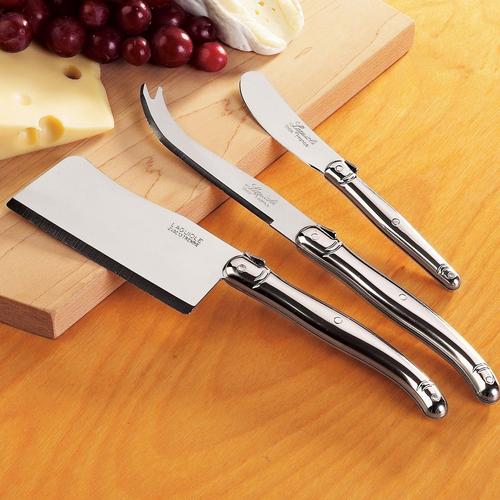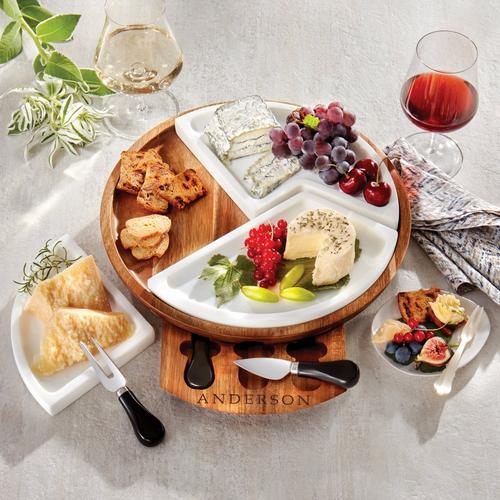While often shrouded in mystique and employed in marketing copy, terroir is grounded in agricultural realities. Soil, elevation, climate and other conditions indelibly affect wines that seek to communicate a sense of place.
The concept can be applied to cheese, too.
“Everywhere that cheese is made has native flora and fauna which will impact the cheese, both in the milk and in the aging,” says Chris Osborne, cheesemaker at Blackberry Farm.
As with wine, ecological and agricultural practices can create cheeses with a strong sense of place, while others may obscure their locality. Terroir is not guaranteed, but it can be an indicator of how the product was farmed and made.
Most people don’t ruminate on farming processes or climate change every time they pick up a piece of cheese or glass of wine. But to better understand the terroir of what we eat and drink, maybe we need to do just that.
Natural selection
Just as wine growers choose grapes based on tradition as well as environmental and financial viability, cheesemakers weigh an array of factors when they select which animal to raise.
The breed of a cow, sheep or goat can impact how cheese made with its milk will taste and express where it was raised.
New York City-based Saxelby’s Cheese offers a “Cow Breed Quintet” box of cheeses, each made with milk from a different breed of cow: Jersey, Dutch Belted, Holstein, Friesian, Ayrshire or Brown Swiss. It illustrates how cheese that starts with milk from Jersey cows, prized for its cream content, tastes different from one made with Brown Swiss cow milk, which is high in casein, or dairy protein.
Some name-protected European cheeses mandate that milk must come from both the species and breed of certain animals native to that region. Manchego from the La Mancha region of Spain must be made with the milk of Manchega sheep, while Comté from the Jura region of France must be made with milk from Montbéliarde or Simmental cows.
The diet of any cow, sheep or goat shapes how cheese made from its milk tastes. This helps express its terroir. A cow that grazes in a pasture will produce milk that tastes different than one fed a standardized ration of grains and dietary supplements.
“We think of terroir as an amorphous idea, but in reality, it’s complex chemistry and microbiology that are at the root of flavor.”—Mateo Kehler, Jasper Hill Farm
Some of this is within a cheesemaker’s control. If you raise cows in Wisconsin, they cannot likely graze on fresh grass in January. In that case, hay would be preferable for most terroir-minded cheesemakers, but that’s not always economical.
Osborne believes that all cheese has terroir, but he says that pasture-fed animals produce milk more likely to express a sense of place.
Scientific reactions
Many argue that commercially produced cheeses, much like mass-produced wines, obscure terroir.
“Terroir will not present itself in products made with industrial methods,” says Dan Belmont, a London-based wine and cheese educator. “Wines that aren’t lobotomized by excess sulfites, [or] cheeses that aren’t pumped with preservatives and artificial ingredients, are alive and have an energy and can transport you to a place. For me, that’s terroir.”
One sticking point among cheesemakers is the way that milk is treated before it’s made into cheese.
“You have to start with raw-milk cheese because it’s the most place-based,” says Mateo Kehler, co-founder of Jasper Hill Farm in Greensboro, Vermont.
Raw milk has not been pasteurized or heat-treated to kill potentially harmful bacteria at levels mandated by the FDA. Cheesemakers can use raw milk, provided that those cheeses age for at least 60 days.
“Too often, I think we use terroir as a marketing concept that comes to mean that something from France is fancier.”—Carlos Yescas, Oldways Cheese Coalition
Kehler believes that pasteurization kills beneficial bacteria that provide flavor.
“Microbes are the most local residents in a landscape,” he says. “We say we milk cows, but actually what we’re doing is farming microbes… Pasteurization is an apology for farming practices that produce problematic microbial ecologies.”
These microbes are crucial to create cheese with terroir, too.
“We think of terroir as an amorphous idea, but in reality, it’s complex chemistry and microbiology that are at the root of flavor,” says Kehler.
Most cheeses in the U.S., including many that use raw milk, are made using prefabricated cultures from a culture house. This can arguably obscure terroir, too.
A better terroir conversation
As with wine, conversations about the terroir of cheese can miss the point.
“Too often, I think we use terroir as a marketing concept that comes to mean that something from France is fancier,” says Carlos Yescas, program director at Oldways Cheese Coalition, a trade organization. Instead, conversations about cheese terroir should focus on animal husbandry, animal breeds and economies from where cheeses hail, he says.
Anne Saxelby, founder/co-owner of Saxelby Cheesemongers and author of the new book, The New Rules of Cheese, agrees.
“We probably focus too much on the romance-y, fancy, intangible aspects of terroir—oooh! leather! sweat! black fruit!—without getting into the conversations with the cheesemakers about the breeds of their animals, the forage they eat and the nuances of their farmland and cheesemaking processes that are the foundation of those flavors,” she says.
Besides, there are other, more pressing questions.
“I think that how a cheese is made, including how the animals are treated, how the land is treated and what the ripple effects are (good or bad) to rural economies and rural ecosystems, is all much more important than terroir,” she says.



